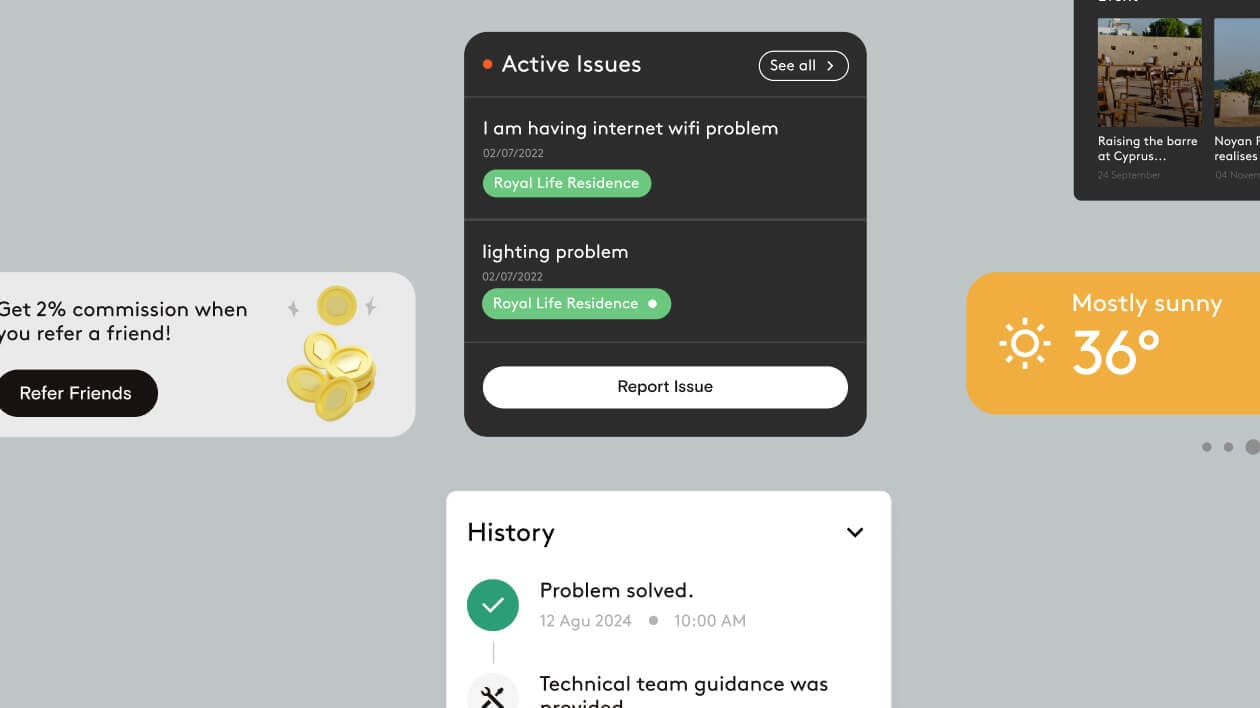Algorithmic Trading
Let Saypr's algorithmic trading experts craft a custom solution that automates your trading strategies, optimizes execution, and unlocks new levels of efficiency and profitability.
Understanding Your Needs
We begin by carefully listening to your trading goals, risk tolerance, and market expertise. We delve into your specific requirements and challenges, ensuring we grasp your vision for algorithmic trading.
Crafting a Custom Solution
Our team of experienced developers and financial experts collaborates with you to design and develop a custom algorithmic trading solution tailored to your needs. We leverage our expertise in financial modeling, trading strategies, and software development to craft a solution that aligns with your goals and objectives.
Rigorous Testing and Validation
We prioritize rigorous testing and validation to ensure the accuracy, reliability, and robustness of your algorithms. We employ advanced backtesting techniques and simulations using historical data to identify potential weaknesses and optimize performance before deployment.
Deployment and Ongoing Support
We deploy your algorithms on secure and scalable infrastructure, ensuring seamless integration with your existing trading systems. We provide ongoing support and maintenance to ensure your algorithms continue to perform optimally, adapting to changing market conditions and evolving regulations.
Design
We craft meaningful digital experiences that captivate and engage, blending creativity with strategy. From concept to execution, we make your brand stand out.
We shape distinctive brands that resonate, ensuring every element reflects your business’s core values.
Our branding process builds emotional connections, making your brand memorable and positioning it for long-term success in the market.
You can contact Saypr by visiting our website, calling us directly, or sending us an email. Our team is ready to discuss your specific requirements and provide a personalized solution to help you achieve your trading goals.
To get started with algorithmic trading, you need to: * **Choose a Trading Platform:** Select a platform that meets your needs and offers the necessary functionality for your strategies. * **Learn Programming Languages:** Familiarize yourself with programming languages commonly used in algorithmic trading, such as Python, C++, or Java. * **Develop Your Strategy:** Define your trading goals, risk tolerance, and the market you want to target. * **Backtest Your Strategy:** Test your algorithms using historical data to assess their performance and identify potential weaknesses. * **Monitor and Optimize:** Continuously monitor the performance of your algorithms and make necessary adjustments as needed.
You can learn more about algorithmic trading through various resources: * **Online Courses and Tutorials:** Many online platforms offer courses and tutorials on algorithmic trading, covering concepts, programming languages, and best practices. * **Books and Articles:** Numerous books and articles are available on algorithmic trading, providing detailed insights into different strategies, techniques, and market dynamics. * **Financial Communities and Forums:** Engage with online communities and forums dedicated to algorithmic trading to share knowledge, discuss strategies, and learn from experienced traders. * **Workshops and Conferences:** Attend workshops and conferences focused on algorithmic trading to gain practical knowledge and network with industry professionals. * **Consulting Services:** Engage with algorithmic trading consultants to receive expert advice and guidance on designing and implementing your trading strategies.
You can mitigate the risks of algorithmic trading by: * **Thorough Testing and Backtesting:** Rigorously test your algorithms using historical data and simulations to identify potential weaknesses and errors. * **Robust Risk Management:** Implement comprehensive risk management strategies, including stop-loss orders, position limits, and volatility controls. * **Monitoring and Optimization:** Continuously monitor the performance of your algorithms and make necessary adjustments to adapt to changing market conditions. * **Security Measures:** Implement strong cybersecurity measures to protect your algorithms from cyberattacks. * **Professional Expertise:** Engage experienced developers and financial experts to design and implement your algorithmic trading systems.
Saypr takes a comprehensive approach to algorithmic trading. We start by understanding your specific trading goals, risk tolerance, and market expertise. Our team of experienced developers and financial experts then collaborates with you to design and develop a custom algorithmic trading solution tailored to your needs. We use cutting-edge technologies and industry best practices to ensure robust, efficient, and reliable trading systems. We also provide ongoing support and maintenance to ensure your algorithms continue to perform optimally.
Saypr prioritizes the security of your algorithmic trading systems. We implement robust cybersecurity measures, including: * **Secure Development Practices:** We follow best practices for secure software development to minimize vulnerabilities in our code. * **Network Security:** We use firewalls, intrusion detection systems, and other security measures to protect your systems from unauthorized access. * **Data Encryption:** We encrypt sensitive data, including trading strategies and market data, to protect it from unauthorized access. * **Regular Security Audits:** We conduct regular security audits to identify and address any potential vulnerabilities. * **Incident Response Plan:** We have a comprehensive incident response plan to handle any security breaches or attacks promptly and effectively.
Saypr offers a comprehensive suite of services to help businesses leverage algorithmic trading: * **Strategy Design and Development:** We work with you to design and develop custom algorithmic trading strategies tailored to your specific goals and risk tolerance. * **Algorithm Implementation:** We implement your strategies using cutting-edge technologies and industry best practices to ensure robust, efficient, and reliable trading systems. * **Testing and Backtesting:** We rigorously test your algorithms using historical data and simulations to validate their performance and identify potential weaknesses. * **Deployment and Maintenance:** We deploy your algorithms on secure and scalable infrastructure and provide ongoing support and maintenance to ensure optimal performance. * **Consulting and Training:** We offer consulting services to guide you through the algorithmic trading process and provide training to your team.
When choosing an algorithmic trading platform, consider: * **Functionality and Features:** Ensure the platform offers the necessary features for your trading strategies, such as order types, backtesting tools, and real-time data feeds. * **Security and Reliability:** Choose a platform with robust security measures and a proven track record of reliability. * **Ease of Use:** The platform should be user-friendly and intuitive, even for novice traders. * **Cost and Fees:** Compare the costs and fees associated with different platforms to find the best value for your needs. * **Customer Support:** Ensure the platform provides responsive and helpful customer support.
Algorithmic trading is not suitable for everyone. It requires a strong understanding of financial markets, programming skills, and a willingness to invest time and effort in learning and implementing complex trading strategies. It is essential to have a clear understanding of the risks involved and to be comfortable with the complexities of automated trading.
Algorithmic trading offers numerous benefits, including: * **Increased Speed and Efficiency:** Algorithmic trading executes trades at lightning speed, allowing you to capitalize on fleeting market opportunities that manual trading might miss. * **Reduced Emotional Bias:** By eliminating human emotions, algorithmic trading helps you make objective decisions based on pre-defined strategies and data analysis. * **Improved Accuracy and Consistency:** Algorithmic trading follows strict rules and logic, ensuring consistent execution and reducing the risk of human errors. * **24/7 Trading:** Algorithmic trading systems can operate continuously, allowing you to trade even when you're not actively monitoring the market. * **Enhanced Risk Management:** Algorithmic trading enables you to implement sophisticated risk management techniques, minimizing potential losses and maximizing returns.
Partnering with Saypr for algorithmic trading offers numerous benefits: * **Expert Expertise:** Our team of experienced developers and financial experts has a deep understanding of algorithmic trading and market dynamics. * **Custom Solutions:** We tailor our solutions to your specific needs and goals, ensuring optimal performance and efficiency. * **Cutting-Edge Technologies:** We utilize cutting-edge technologies and industry best practices to deliver robust and reliable trading systems. * **Security and Compliance:** We prioritize security and compliance, ensuring your systems are protected and operate within regulatory frameworks. * **Ongoing Support:** We provide ongoing support and maintenance to ensure your algorithms continue to perform optimally.
Follow these best practices for successful algorithmic trading: * **Define Clear Objectives:** Establish specific and measurable goals for your trading strategies. * **Backtest Thoroughly:** Rigorously test your algorithms using historical data and simulations to validate their performance. * **Manage Risk Effectively:** Implement robust risk management strategies to protect your capital. * **Monitor Performance Continuously:** Track the performance of your algorithms and make necessary adjustments as needed. * **Stay Updated:** Keep abreast of market trends, technological advancements, and regulatory changes. * **Seek Professional Advice:** Consult with experienced developers and financial experts to ensure your algorithmic trading systems are designed and implemented effectively.
The costs associated with algorithmic trading can vary depending on the complexity of your strategy and the services you require. These costs include: * **Development Costs:** The cost of designing, developing, and testing your algorithmic trading system. * **Infrastructure Costs:** The cost of maintaining your trading platform, data feeds, and other essential infrastructure. * **Brokerage Fees:** Transaction fees charged by your broker for executing trades. * **Data Costs:** The cost of accessing real-time market data. * **Maintenance and Support:** Ongoing support and maintenance to keep your algorithms up-to-date and performing optimally.
Algorithmic trading raises ethical considerations, such as: * **Market Manipulation:** Algorithms can be used to manipulate market prices, creating unfair advantages for certain traders. * **Flash Crashes:** Algorithms can contribute to sudden and rapid market declines, causing significant losses for investors. * **Transparency and Disclosure:** The use of algorithms should be transparent and disclosed to investors to ensure fair and informed decision-making. * **Access and Equity:** Algorithmic trading can create an uneven playing field, giving advantages to those with access to advanced technology and resources. * **Algorithmic Bias:** Algorithms can perpetuate existing biases in data, leading to unfair or discriminatory trading outcomes.
Algorithmic trading is constantly evolving, with emerging trends including: * **Artificial Intelligence (AI):** AI algorithms are increasingly being used to analyze market data and make trading decisions. * **Machine Learning:** Machine learning algorithms can learn from historical data and adapt to changing market conditions. * **Cloud Computing:** Cloud computing platforms provide scalable and cost-effective infrastructure for algorithmic trading. * **Blockchain Technology:** Blockchain technology can enhance the security and transparency of algorithmic trading systems. * **Regulation and Compliance:** Regulatory scrutiny of algorithmic trading is expected to increase, requiring greater transparency and compliance.
Before implementing algorithmic trading, you should consider: * **Your Trading Goals:** Define your objectives and the specific market you want to target. * **Risk Management:** Implement robust risk management strategies to protect your capital. * **Data and Infrastructure:** Ensure access to reliable market data and a robust trading platform. * **Testing and Backtesting:** Thoroughly test your algorithms using historical data and simulations. * **Monitoring and Optimization:** Continuously monitor the performance of your algorithms and make necessary adjustments. * **Compliance and Regulations:** Understand and comply with all relevant regulations and legal requirements.
Algorithmic trading poses regulatory challenges, including: * **Market Surveillance:** Regulators need to monitor algorithmic trading activities to detect and prevent market manipulation and other misconduct. * **Cybersecurity:** Regulators need to ensure the security of algorithmic trading systems to protect against cyberattacks and data breaches. * **Transparency and Disclosure:** Regulators need to ensure transparency in algorithmic trading practices and require clear disclosure of algorithms used by financial institutions. * **Algorithmic Bias:** Regulators need to address the potential for algorithmic bias in trading decisions and promote fair and equitable market access. * **Cross-Border Regulation:** Regulators need to coordinate with their counterparts in other jurisdictions to address cross-border algorithmic trading activities.
Algorithmic trading, while powerful, comes with certain risks: * **Technical Errors:** Bugs or glitches in the code can lead to unexpected trading outcomes. * **Market Volatility:** Unforeseen market events can disrupt your algorithms' performance. * **Data Accuracy:** Inaccurate or incomplete data can lead to faulty trading decisions. * **Overfitting:** Algorithms can become too specific to historical data and fail to adapt to changing market conditions. * **Flash Crashes:** Sudden and rapid market declines can trigger unexpected losses. * **Cybersecurity Threats:** Algorithmic trading systems are vulnerable to cyberattacks that could compromise their integrity and security.
Algorithmic trading is a powerful technique that uses computer programs to automate trading decisions and execute trades based on pre-defined rules and strategies. It eliminates emotional biases and allows for faster and more precise execution than manual trading. This technology can be applied to various financial markets, including stocks, futures, options, and foreign exchange.
Algorithmic trading can automate a wide range of strategies, including: * **Trend Following:** Identifying and capitalizing on long-term market trends. * **Mean Reversion:** Exploiting price fluctuations around a specific average. * **Arbitrage:** Profiting from price discrepancies between different markets. * **High-Frequency Trading (HFT):** Executing a large number of trades at extremely high speeds to capitalize on microsecond-level price fluctuations. * **Scalping:** Making small profits from short-term price movements. * **News-Based Trading:** Triggering trades based on real-time news events and market sentiment.

















